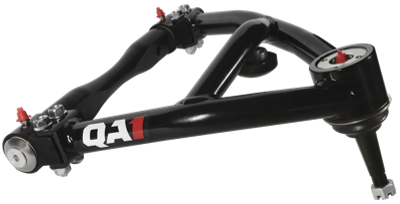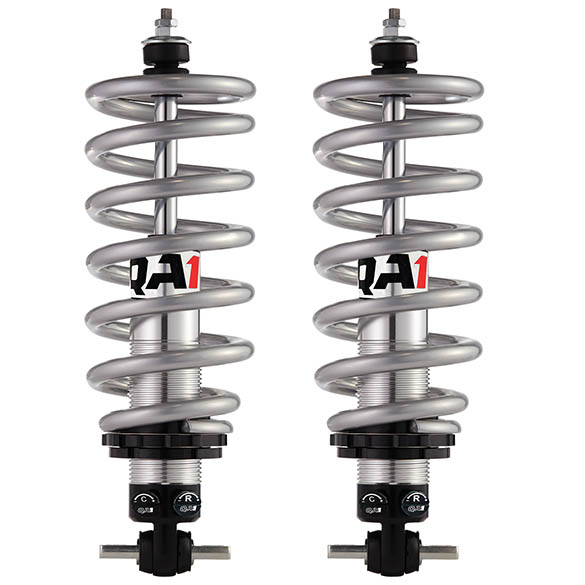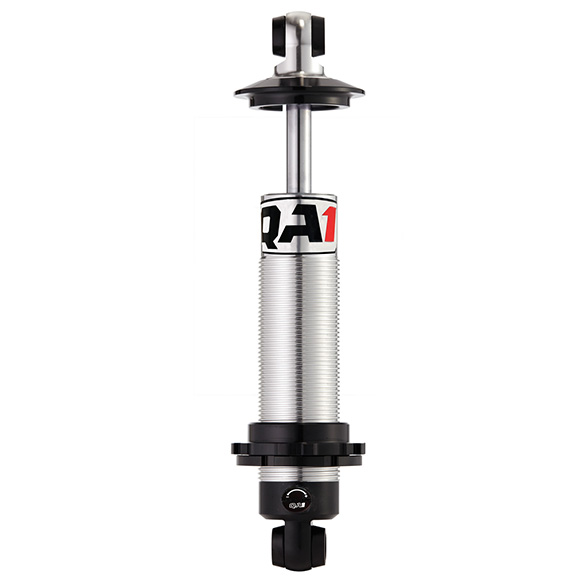Coilovers vs Lowering Springs
You want to lower your car or truck. And why not? Actually, the more important question is “Why?” period. Are you strictly looking to get a better stance? Hoping to increase performance? Maybe a bit of both.
There are two common routes you can go: swap in lowering springs or go for a coilover setup. Let’s take a look at both and help you determine how to lower your car or truck.
What are lowering springs?
In this case, the name says it all. Lowering springs replace your stock coil springs in the stock location. Pull one spring out, put the other spring in. This will lower your car a fixed distance. You’ll usually see a number tied to it, such as “2 inch lowering springs.” That means they’re designed to drop your car by 2 inches. No more, no less.
All this is to say, there is no adjustment or range. Your car sits where it sits. The height is determined entirely by the height and rate of springs that sit in fixed locations. You can’t move them up or down.
What are coilovers?
A coilover, AKA a coilover shock, is also what it sounds like. A coil spring slides over the shock and rests on a spring perch that is threaded onto the shock’s body. A cap then holds the spring in place. You can move that spring perch up or down the shock to adjust your ride height. The higher your spring, the higher your ride height and vice versa.
This design gives you the ability to easily adjust your vehicle’s stance in large or small increments. Don’t like how it sits? You can raise it or lower it in a couple minutes with two spanner wrenches. That means you don’t have to swap out (and more importantly, buy) an entire set of springs just to go up or down a fraction of an inch.
Why use lowering springs?
Lowering springs work just fine if you plan to retain stock components throughout your suspension system. You can swap the springs in, get an alignment and go. There are no other adjustments that can really be made.
You still have the ability to tune the handling of your car via adjustable shocks that swap into the stock location. This allows you to firm up or soften the ride with a couple clicks.
What are the disadvantages of lowering springs?
Well, that lack of adjustment isn’t always a good thing. What if your front tires rub the inner fenders and you need to go up a quarter of an inch? Out of luck. What if you want to swap on a different wheel and tire package and need more clearance? Then you need a new set of springs.
Also, you may well be sacrificing ride quality to go lower. In order to give you that lowered stance, the spring height will be shorter. That often requires a higher spring rate to keep it from coil binding. While some prefer this more rigid ride, others may not.
Lastly, a 2 inch drop for someone else might be 1 inch for you. Or 3 inches. Vehicle weights vary, and sometimes widely. Your car or truck might be heavier or lighter than the test vehicles used to develop the springs based on options like AC, engine size, lightweight bodywork, aftermarket components, etc. It also depends on the quality and consistency of the springs used.
Why convert to coilovers?
Coilovers provide much more flexibility. You can adjust your overall stance or level out the car front and rear. You can also use them to get rid of the dreaded “Chevy lean” to get your ride sitting perfectly.
If performance is your goal, coilovers also give you the ability to corner balance your car. You can fine tune the height of each corner to improve your vehicle’s weight distribution and overall handling.
And while the installation process of lowering springs seems pretty simple, coil-over shocks aren’t much more difficult. Most of our coilovers can simply be bolted in using stock mounts. The only extra steps include a small amount of assembly prior to installation and setting your ride height after the fact.
Last but not least, you can change your spring rate without affecting your ride height. While lowering springs rely on spring rate and height to alter your ride height, coilovers use the spring seat’s location on the shock to raise or lower your vehicle. That means you could swap in a heavier or lighter spring and easily get back to your desired ride height.
What are the disadvantages of coilovers?
You might see some forum posts out there that talk about coilovers ruining ride quality or making a car ride rough. But this shouldn’t be the case. Coil-over shocks don’t inherently ride any harsher than your stock set up. Especially if you have adjustable shock valving that allows you to fine tune your ride quality. If anything, they may tighten up the way your car drives or remove suspension play from worn out parts. This can cause you to feel other shakes and rattles that weren’t noticeable in the past.
You might also think coil-overs are more expensive. But that’s not really the case. If you think about it, coilovers upgrade both your springs AND shocks. Pairing a set of nice lowering springs with quality adjustable shocks may cost you about the same in the long run.
Option three: break out the torch
People take this approach, but it's not one we recommend. Safety concerns aside; if you’ve ever tried to cut your springs or heat them to change your ride height, you’ve probably noticed how much the ride quality suffers. This is a common tactic that usually results in a bad ride since the modification will increase the spring rate. Lower, yes. But you'll feel every pebble or crease in the road along the way.
In the end, choose what’s right for you
If you already have lowering springs and love them, great! There’s a reason they’re popular. And they can work really well when paired with a good set of shocks. If you want to swap in coilovers, we’re happy to help with that, too. They offer a ton of flexibility when trying to achieve the perfect blend of looks, comfort and performance.
Our tech team is happy to help answer any additional questions you may have about coilovers. Give us a call at 952-985-5675.



